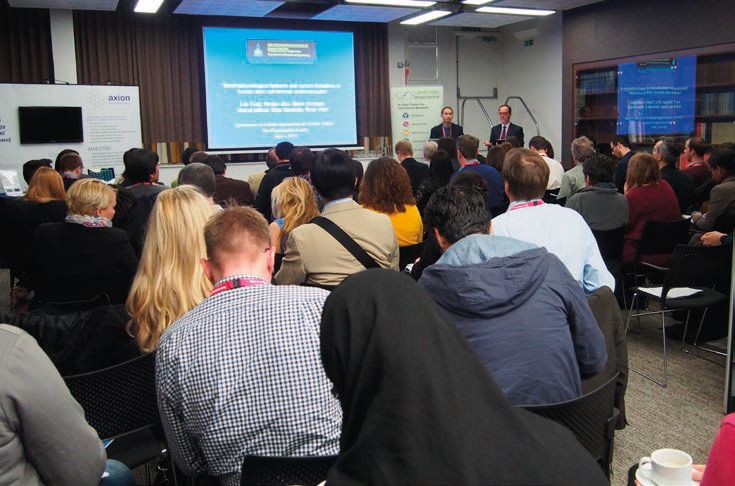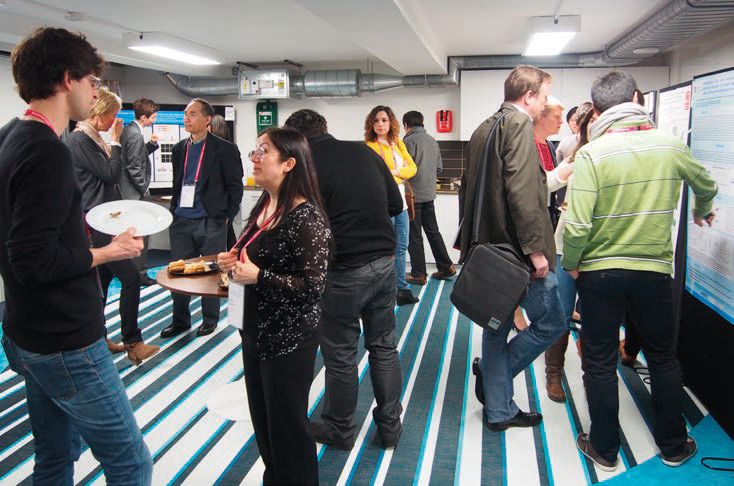
Physiology News Magazine
Inaugural H3 symposium ‘Cellular approaches for cardiac repair: A physiological perspective’
Events
Inaugural H3 symposium ‘Cellular approaches for cardiac repair: A physiological perspective’
Events
Cesare M Terracciano
Imperial College London, UK
https://doi.org/10.36866/pn.95.19
4 April 2014,
Hodgkin Huxley House, London

I have recently had the opportunity, together with Susan Currie (University of Strathclyde) and Sandra Jones (University of Hull), to organise the inaugural H3 symposium. The symposium took place in the brand new headquarters of The Physiological Society, named Hodgkin Huxley House (hence the H3) in London, and was a full day of oral and poster presentations on a subject that is topical, fascinating and controversial.
Stem and progenitor cells in cardiac physiology and medicine are very likely to change our understanding of cardiac development, function and disease, and to provide new, more relevant physiological and pathological models which may become a real alternative to animal experimentation. In the last decade, fuelled by enormous public interest and significant funding from government agencies and charity organisations, the field of cardiac regenerative medicine has expanded massively and every scientific cardiology meeting now contains sizeable sessions on this topic, predominantly focusing on stem cell origin, differentiation, signalling, disease modelling and clinical applications. However, specific meetings on the physiological mechanisms involved in regenerative approaches are rare and this H3 symposium gave us the platform to bring together major experts from across the globe to specifically discuss the physiological perspective.
The programme was divided into three parts: the sources of cellular regenerative elements, the use of stem and progenitor cells for in vitro studies, and the clinical applications. I was particularly proud of the phenomenal line up of speakers who took part to the symposium. From cardiac physiologists to bioengineers, from developmental biologists to clinical cardiologists, a multidisciplinary faculty dissected the current evidence, and presented new and exciting results and proposed future directions. At the end of the meeting, several concepts were more defined in my mind: the high heterogeneity in the origin and function of the populations of cells studied, the need to define parameters that are relevant for physiology, the importance of more complex, multicellular systems with tissue engineering as a priority, and the necessity of redefining the clinical goals in cell therapy trials. There is clearly a lot of future work in this field and this symposium was a very intense learning opportunity for the novices and an important check point for the experts.
The new venue at the Hodgkin Huxley House provided a cosy environment for a meeting that was extremely popular and sold out many days in advance. The Society is intending to live cast these events in the future following the overwhelming demand. The nice environment, the convenience of the central London location and the helpful staff of The Physiological Society contributed to the success of the meeting and will ensure a bright future for the H3 symposia series.

